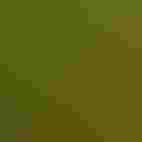Yellow Warbler
At a Glance
The bright, sweet song of the Yellow Warbler is a familiar sound in streamside willows and woodland edges. This is one of our most widely distributed warblers, nesting from the Arctic Circle to Mexico, with closely related forms along tropical coastlines. Their open, cuplike nests are easy to find, and cowbirds often lay eggs in them. Yellow Warblers in some areas thwart these parasites by building a new floor over the cowbird eggs and laying a new clutch of their own. In one case, persistent cowbirds returned five times to lay more eggs in one nest, and an even more persistent warbler built six layers of nest floors to cover up the cowbird eggs.
All bird guide text and rangemaps adapted from Lives of North American Birds by Kenn Kaufman© 1996, used by permission of Houghton Mifflin Harcourt Publishing Company. All rights reserved.
Category
Perching Birds, Wood Warblers
IUCN Status
Least Concern
Habitat
Arroyos and Canyons, Forests and Woodlands, Freshwater Wetlands, Shrublands, Savannas, and Thickets, Tundra and Boreal Habitats
Region
Alaska and The North, California, Eastern Canada, Florida, Great Lakes, Mid Atlantic, New England, Northwest, Plains, Rocky Mountains, Southeast, Southwest, Texas, Western Canada
Behavior
Direct Flight, Flitter
Population
97.000.000
Range & Identification
Migration & Range Maps
Migrates mostly at night. Fall migration is very early, with many moving south during August.
Description
4 1/2-5" (11-13 cm). Plain yellow face makes dark eye conspicuous; yellow edgings on dark wing feathers. Yellow spots in tail (most warblers have white spots). Adult male has reddish streaks on chest. Some young females in fall very dull. Compare to other warblers, other small yellow birds, such as goldfinches.
Size
About the size of a Sparrow
Color
Black, Green, Red, Yellow
Wing Shape
Rounded
Tail Shape
Notched, Square-tipped
Songs and Calls
Song a bright, musical sweet-sweet-sweet, sweeter-than-sweet. Call a sharp chip.
Call Pattern
Falling, Flat, Rising, Undulating
Call Type
Chirp/Chip, Hi, Whistle
Habitat
Bushes, swamp edges, streams, gardens. Breeds in a variety of habitats in east, including woods and thickets along edges of streams, lakes, swamps, and marshes, favoring willows, alders, and other moisture-loving plants. Also in dryer second-growth woods, orchards, roadside thickets. In west, restricted to streamside thickets. In winter in the tropics, favors semi-open country, woodland edges, towns.
Sign up for Audubon's newsletter to learn more about birds like the Yellow Warbler
Behavior
Eggs
4-5, sometimes 3-6. Greenish-white, with variety of specks or spots of brown, olive, and gray. Incubated solely by female, 11-12 days. Male feeds female on nest. Very frequently parasitized by cowbirds. May defend against parasitism by rebuilding new nest on top of cowbird eggs, or by deserting nest.
Young
Fed by both parents (female does more). Young leave the nest 9-12 days after hatching.
Feeding Behavior
Forages from low levels up to treetops. Takes insects from twigs and foliage, hovers briefly to take items from underside of leaves, and flies out after flying insects. Males tend to forage higher and in more open foliage than females. Forages alone in winter in the tropics, defending a winter feeding territory.
Diet
Mostly insects. Up to two-thirds of diet may be caterpillars of various kinds. Also feeds on mayflies, moths, mosquitoes, beetles, damselflies, treehoppers, and other insects, plus spiders; also eats a few berries.
Nesting
Males defend nesting territories by singing, sometimes performing fluttering flight displays. Male courts female by actively pursuing her for 1-4 days. Nest: Placed in upright fork of branches in shrubs, small trees, and briars from 2-60' above ground. Nest (built by female) is compact open cup of weed stalks, shredded bark, grass, lined with plant down or fur. Males accompany females on trips to the nest and will occasionally help build. Females will steal nest material from other nests.
Conservation
Conservation Status
Because it favors second growth and edges, not as vulnerable to loss of habitat as some warblers. Current populations probably stable.
Climate Threats Facing the Yellow Warbler
Choose a temperature scenario below to see which threats will affect this species as warming increases. The same climate change-driven threats that put birds at risk will affect other wildlife and people, too.












